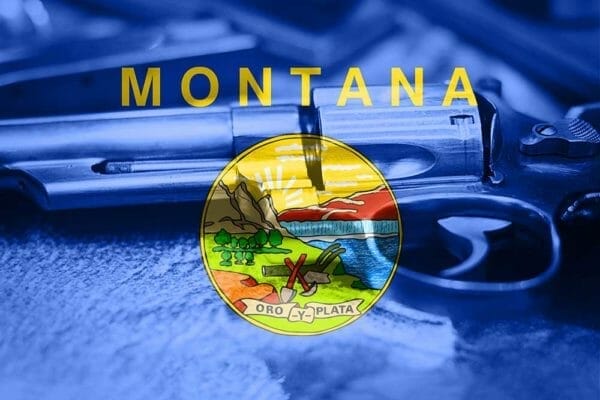
U.S.A. –-(AmmoLand.com)- The Montana House of Representatives has passed major gun law legislation, HB102, by more than a 2-1 margin, 66 for, 31 against.
The bill is the accumulation of a decade and a half of struggle against Democrat Governors, who have repeatedly vetoed reform legislation passed with large majorities in the legislature. Numerous sections in the bill show the Montana legislature has learned the lesson from other states as they restore the right to keep and bear arms.
Link to the text of Montana bill HB102 at mt.gov.
HB102 is a general revision of Montana gun law. Numerous Montana statutes are revised, and new sections are added.Here are the major points of HB102:
Purpose and Legislative intent from the bill:
NEW SECTION. Section 1. Purpose. The purpose of [sections 1 through11] is to enhance the safety of people by expanding their legal ability to provide for their own defense by reducing or eliminating government-mandated places where only criminals are armed and where citizens are prevented from exercising their fundamental right to defend themselves and others.
NEW SECTION. Section 2. Legislative intent. It is the intent of the legislature to reduce or remove provisions of law that limit or prohibit the ability of citizens to defend themselves by restricting with prior restraint the right to keep or bear arms that the people have reserved to themselves in the Montana constitution, and to further establish that the right to defense of a person’s life, liberty, or property is a fundamental right.
Section 3. Legislative Findings:
- The Montana Constitution does not grant the Montana University system the power to amend, suspend, alter or abolish Constitutional rights.
- The Montana University land and buildings are public property and are not private entities.
- Prohibition of possession of firearms on campus calls into question the right to keep and bear arms protected by the Montana Constitution.
- Gun-free zones provide an increased risk to the health and safety of citizens.
- The U.S. Supreme Court, in the Heller and McDonald decisions, affirmed the right to keep and bear arms. The rights apply against local and state governments.
Section 4. Establishes 8 limited places where concealed firearms may not be carried, and confirms they may be carried everywhere else.
Section 5. Prohibits university officials from infringing on the right to keep and bear arms.
Section 6. Allows for limited regulation of firearms on University campuses.
Section 7. Allows for lawsuit and recovery of damages, court costs and attorney’s fees if the right to keep and bear arms is denied, diminished or wrongfully delayed by government officials.
Section 8. Protects the defensive display of a weapon.
Section 9. Eliminates the penalties for concealed carry for people who may legally possess a firearm (permitless carry).
Section 10. Limits concealed carry in places that serve alcohol, and in government buildings, to people who have concealed carry permits.
Section 11. Reinforces and enhances Montana’s preemption law for firearms.
Section 12. Repeals exceptions for numerous privileged officials and the statute banning the carry of firearms on a train.
Section 13. Severability of the statute
Section 14. Codification instructions
Section 15. Statute shall be effective on passage and approval.
Passage of HB102 in the Senate seems likely. Governor Greg Gianforte is expected to sign the bill.
Fifteen years of much-needed reforms are included in the fifteen sections of HB102. The chance of passage is good. Expect intense lobbying and propaganda by those who want the population disarmed.
About Dean Weingarten:
Dean Weingarten has been a peace officer, a military officer, was on the University of Wisconsin Pistol Team for four years, and was first certified to teach firearms safety in 1973. He taught the Arizona concealed carry course for fifteen years until the goal of Constitutional Carry was attained. He has degrees in meteorology and mining engineering, and retired from the Department of Defense after a 30 year career in Army Research, Development, Testing, and Evaluation.

